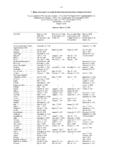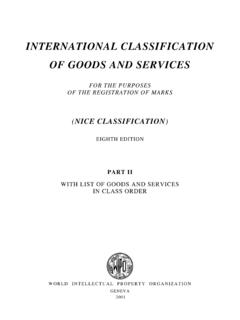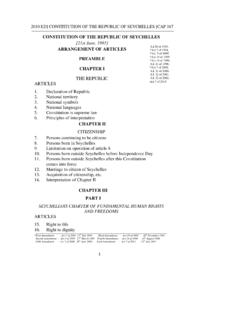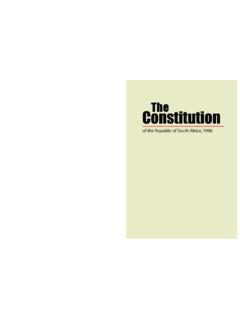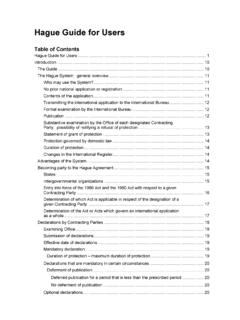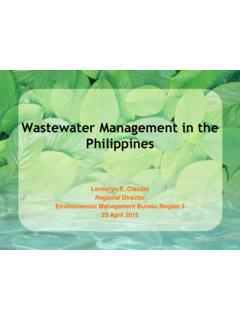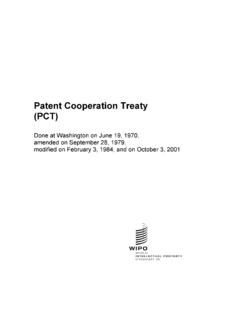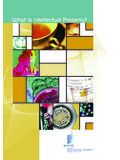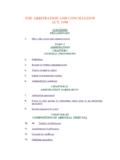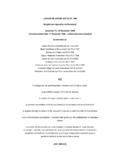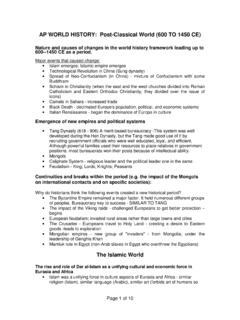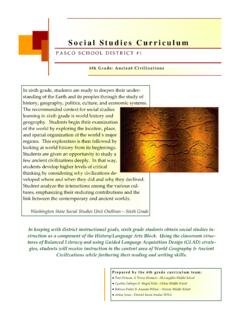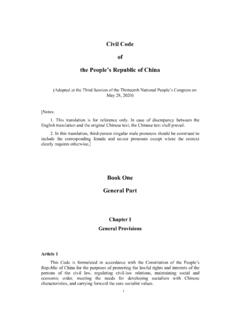Transcription of E-Waste Recycling Technologies - WIPO
1 Patent Landscape Report onE- waste Recycling Technologies 2013 PATENT LANDSCAPE REPORTS PROJECTin cooperation withFor more information contact wipo at World Intellectual Property Organization34, chemin des Box 18CH-1211 Geneva 20 SwitzerlandTelephone :+4122 338 91 11 Fax :+4122 733 54 28 Patent Landscape Report on Desalination E-Waste Recycling Technologies 2013 wipo Publication No. ISBN 978-92-805-2432-1 The wipo patent landscape report project is based on the Development Agenda project DA_19_30_31_01 Developing Tools for Access to Patent Information described in document CDIP/4/6, adopted by the Committee on Development and Intellectual Property (CDIP) at its fourth session held from November 16 to November 20, purpose of each report is three fold.
2 It attempts to research and describe the patterns of patenting and innovation activity related to specific Technologies in various domains such as health, food and agriculture, climate change related Technologies , and others. wipo attempts to collaborate for each report with institutional partners (IGOs, NGOs, public institutions of Member States) working in the respective field and having an interest in a specific topic. The collaborative work in the planning and evaluation phases may also serve as a vehicle for these institutions to familiar-ize themselves with the utilization and exploitation of patent information and related issues of patent protection.
3 wipo welcomes proposals for collaboration. Each report also serves as an illustrative example for retrieving patent information in the respective field and how search strategies may be tailored accordingly. It therefore includes detailed explanations of the particular search methodology, the databases used and well documented search queries that should ideally enable the reader to conduct a similar report of this project is contracted out to an external firm selected in a tendering procedure. The tender is open to a limited number of bidders that were pre-selected based on their submission of an Expression of Interest (EOI).
4 wipo invites the submis-sion of fur ther EOIs by qualified Information on the project, the ongoing work, and a compilation of reports published also by other institutions is available at : specific information, requests or proposals, please contact us at : Patent Landscape Report on E-Waste Recycling Technologies A patent landscape report prepared for the World Intellectual Property Organization ( wipo ) by Thomson Reuters IP Analytics Ed White and Rohit Singh Gole In cooperation with the Basel Convention Secretariat November 2013 2 3 The present Patent Landscape Report (PLR) forms part of wipo s Development Agenda project DA_19_30_31_01 ( Developing Tools for Access to Patent Information )
5 Described in document CDIP/4/6 adopted by the CDIP at its fourth session held from November 16 to November 20, 2009. This report is prepared in the context of collaboration of wipo with the Secretariat of the Basel Convention on the Control of Transboundary Movements of Hazardous Wastes and their Disposal (SBC, website: ), which is administered by the United Nations Environment Programme (UNEP). The report aims at providing patent based evidence on the available Technologies and the patenting trends in the area of electronic waste ( E-Waste ) Recycling and material recovery, while it is intended to provide background and supporting information to the Partnership for Action on Computing Equipment under the Basel Convention and complement the Guideline on Material Recovery and Recycling of End-of-Life Mobile Phones and the Guideline on Environmentally Sound Material Recovery and Recycling of End-of-Life Computing Equipment.
6 The report covers in detail patent applications and granted patents within the space of E-Waste processing, and the Recycling and recovery of materials from consumer products at the end of their useful life. Additionally, the report uses reference information such as news and other business data sources to extend the information into real-world applicability, and also to verify the interest and commercial activity of entities mentioned within the study. The patent landscaping process applied to the E-Waste field has uncovered several interesting facets of the electronic waste industry.
7 Specifically, the patent activity of global E-Waste innovation points strongly to the commoditization of electronic waste ; in particular as a source of high value materials, such as rare earth metals ( lanthanum, neodymium and praseodymium) that are commonly used in modern electronic items. A similar trend is also shown for noble metals, in particular silver, but also gold and platinum. Confirming this trend are the high levels of patent applications from metallurgy and refractory corporations, such as JX Nippon Mining and Metals, Kobe Steel, Mitsui Mining and Smelting and others.
8 These companies are not just applying for patents; they are in some cases investing heavily in them, seeking protection for their research in multiple jurisdictions around the world, in a process which adds substantially to the cost of patent prosecution. This is particularly the case for Japanese corporations where multiple translations into English, French and chinese may be required. EXECUTIVE SUMMARY 4 This commoditization of E-Waste is evident in a certain level of specialization of commercial entities in different parts of the world. The International Labour Organization recently published a report on the flow of E-Waste streams from developed economies such as Europe and the US to Asia, in particular to China and India.
9 1 From the patent analysis it is clear that for example domestic chinese registered innovation tends to deal with the dismantling of electronic items, separation of waste streams and focuses on devices at a component level, printed circuit boards, batteries etc. Conversely, innovation from developed economies is more focused on the complete device, a television, computer or mobile phone. The clearest trend however is the emergence of chinese domestic patent activity overall within the E-Waste industry. Patent application rates have increased seven-fold in just 6 years, and is largely driven by academic institutions.
10 This perhaps indicates the existence of incentive schemes for academic patent filing, a point bolstered by the fact that very few chinese domestic patent applications are also filed in other jurisdictions a common occurrence for patent rights from other territories. Therefore, it is difficult as yet to assert what the wider implication of this explosion of intellectual property (IP) activity in China will ultimately be. The huge growth also means that the majority of these patents are still applications, as applications tend to remain pending for a period of 4 years or more, and other metrics of patent quality such as citation rates and patent sales are also somewhat tied to age.
